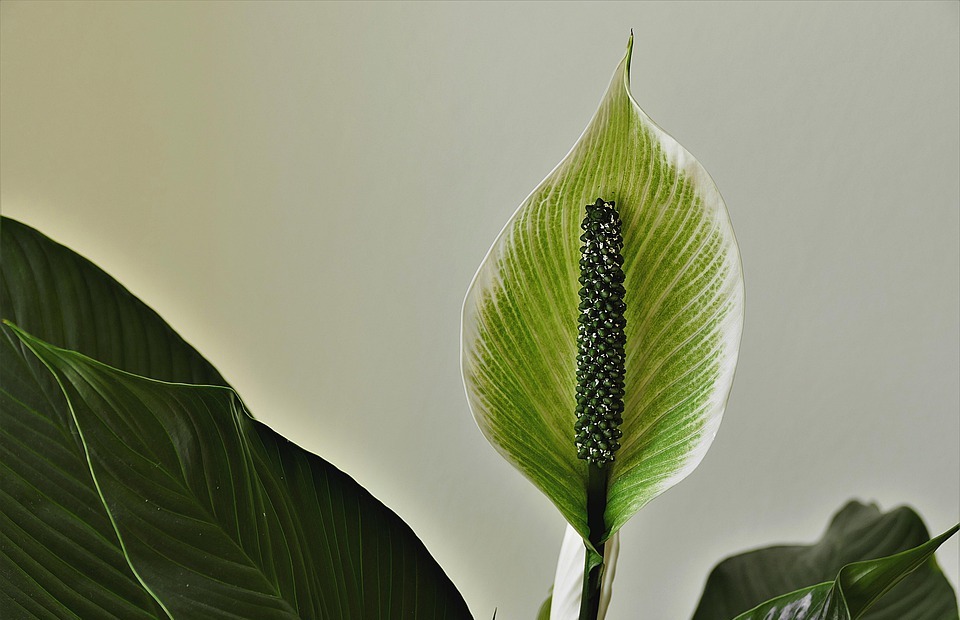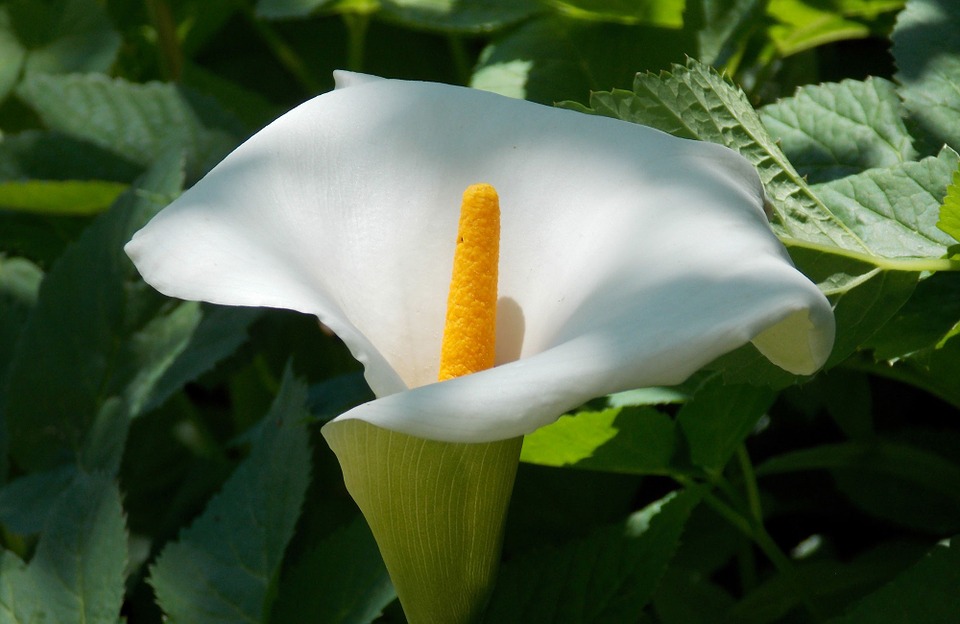Peace lilies, with their elegant white spathes and lush foliage, are a popular choice for indoor plant enthusiasts. However, for cat owners, the presence of these alluring plants can be a cause for concern. This article explores the potential dangers of peace lilies for cats, shedding light on the toxicity they pose and offering practical advice to keep your feline friend safe.
Part 1: Understanding the Toxicity of Peace Lilies

1.1 The Culprit: Calcium Oxalate Crystals
Peace lilies, scientifically known as Spathiphyllum, belong to the Araceae family, which encompasses several other popular houseplants known for their toxicity to pets. The culprit behind their harmful nature lies in the presence of calcium oxalate crystals, also known as raphides. These microscopic, needle-shaped crystals are found in all parts of the plant, including the leaves, stems, and even the attractive white spathes that often mislead people into thinking they are flowers.
1.2 The Mechanism of Toxicity: Irritation and Inflammation
When a cat ingests a peace lily, the calcium oxalate crystals come into contact with the delicate tissues of their mouth, tongue, lips, and digestive tract. The sharp, needle-like crystals cause intense irritation and inflammation, triggering a cascade of reactions that lead to discomfort and potential health complications.
1.3 The Severity of Toxicity: A Spectrum of Reactions
The severity of the reaction depends on several factors:
Amount Ingested: Larger quantities of ingested plant material generally lead to more severe symptoms.
Cat's Size: Smaller cats are more susceptible to the effects of toxins due to their lower body weight.
Individual Sensitivity: Some cats are more sensitive to certain toxins than others, leading to varied reactions.
1.4 Symptoms of Peace Lily Poisoning in Cats
If your cat has ingested a peace lily, be on the lookout for the following signs, which can appear within minutes to a few hours after ingestion:
Oral Irritation: Excessive drooling, pawing at the mouth, and swelling of the lips, tongue, or mouth are common signs.
Gastrointestinal Issues: Vomiting, diarrhoea, and difficulty swallowing are indicative of irritation in the digestive tract.
Respiratory Problems: In severe cases, wheezing, difficulty breathing, or even choking can occur.
Lethargy: A decrease in energy levels and activity can also be a sign of toxicity.
1.5 Common Misconceptions about Peace Lily Toxicity
"Only the flowers are poisonous." This is incorrect. All parts of the peace lily, including leaves, stems, and flowers, contain calcium oxalate crystals and are potentially toxic.
"My cat is fine, so it must be harmless." Symptoms can vary in severity and may not always manifest immediately. Even mild cases should be monitored and addressed with a veterinarian.
Part 2: What to Do if Your Cat Eats a Peace Lily

If you witness your cat eating a peace lily or suspect they have ingested it, immediate action is crucial.
2.1 Immediate Action
1. Remove the Plant: Immediately remove the peace lily from your cat's reach, ensuring it is inaccessible to them.
2. Inspect the Mouth: Carefully check your cat's mouth for any visible plant fragments.
3. Rinse the Mouth: If possible, gently rinse your cat's mouth with clean water. This helps to remove any residual crystals and may offer temporary relief.
2.2 Contact Your Veterinarian
Emergency Call: Contact your veterinarian immediately, even if your cat shows mild symptoms. Time is of the essence in treating poisoning, and early intervention can significantly improve the outcome.
Describe the Situation: Provide your veterinarian with as much information as possible, including the type of plant ingested, the approximate amount consumed, and the time of ingestion.
2.3 Potential Treatments
Your veterinarian may recommend a range of treatments depending on the severity of the poisoning:
Induced Vomiting: This procedure may be performed to remove any remaining plant material from the stomach, reducing the exposure to toxins.
Activated Charcoal: Activated charcoal is a substance that can absorb toxins in the digestive tract, helping to prevent further absorption into the bloodstream.
Fluids: Intravenous fluids may be administered to prevent dehydration, which is a potential complication of vomiting and diarrhoea.
Anti-Inflammatory Medications: Anti-inflammatory drugs can help reduce pain and swelling associated with oral irritation and inflammation.
Supportive Care: Monitoring for complications, providing pain relief, and administering oxygen therapy in severe cases are all part of supportive care.
Part 3: Preventing Peace Lily Poisoning in Cats

While accidents can happen, proactive measures can significantly reduce the risk of your cat ingesting a peace lily.
3.1 Placement is Key
High Shelves and Hanging Baskets: Position your peace lilies on high shelves or in hanging baskets where your cat cannot reach them.
Cat-Proof Rooms: Consider keeping your peace lilies in rooms that your cat cannot access, such as a guest room or a home office.
Deterrent Measures: Use cat deterrents, such as citrus peels or commercial cat-repelling sprays, around your plants. However, always ensure these products are safe for cats and do not contain any harmful ingredients.
3.2 Supervise Your Cat
Close Observation: Supervise your cat closely, especially when they are near your plants. Pay attention to their behaviour and be alert to any signs of interest in your peace lilies.
Playtime and Enrichment: Provide your cat with engaging toys, scratching posts, and interactive games to keep them entertained and stimulated. This can help divert their attention from potentially harmful plants.
3.3 Alternative Plant Choices
Cat-Friendly Plants: Opt for cat-safe plants that are non-toxic and appealing to your feline companion. Some options include spider plants, catnip, and African violets.
Artificial Plants: Consider using artificial plants that are visually appealing and offer a safe alternative to live plants.
3.4 Importance of Prevention
Preventing peace lily poisoning is always better than dealing with the consequences. By taking these proactive steps, you can create a harmonious living environment where your cat and your houseplants can co-exist safely and happily.
Part 4: The Bottom Line: Peace Lilies and Cats
Peace lilies, though aesthetically pleasing, pose a potential threat to cats due to the calcium oxalate crystals they contain. While mild cases of poisoning may only result in oral irritation, severe ingestion can lead to gastrointestinal issues, respiratory problems, and even life-threatening complications. It's crucial to be aware of the risks, take preventative measures, and act swiftly if your cat shows signs of poisoning. Always seek veterinary advice if you suspect your cat has ingested a peace lily.
Part 5: FAQs
5.1 Are all lilies poisonous to cats?
While peace lilies are toxic to cats, not all lilies are. True lilies (such as Easter lilies, tiger lilies, and day lilies) are particularly dangerous and can cause severe kidney failure in cats. These lilies should be kept completely out of reach of cats.
5.2 What if my cat only nibbled a small piece of peace lily?
Even a small amount of ingestion can cause irritation and discomfort. It's always best to contact your veterinarian for advice, regardless of the amount consumed. They can assess the situation and recommend appropriate treatment if needed.
5.3 How long does peace lily poisoning last?
The duration of symptoms depends on the severity of the poisoning and the treatment provided. In mild cases, symptoms may resolve within a few days. However, severe cases may require more extended treatment, monitoring, and supportive care.
5.4 Are peace lily flowers more poisonous than the leaves?
All parts of the peace lily plant contain calcium oxalate crystals, so both leaves and flowers are potentially toxic. There is no evidence to suggest that one part of the plant is more toxic than another.
5.5 Can I use household remedies to treat peace lily poisoning in my cat?
It's crucial to avoid home remedies and seek veterinary care immediately. Improper treatment can worsen the situation and delay recovery.
5.6 Should I remove all my peace lilies if I have a cat?
While it's not mandatory to remove all peace lilies, it's advisable to take precautions to prevent your cat from accessing them. Consider relocating them to higher shelves or hanging baskets, using cat-deterrent measures, or choosing alternative plant options.
5.7 Can peace lily poisoning be fatal to cats?
While rare, severe cases of peace lily poisoning can be fatal, especially if the cat is unable to receive prompt veterinary care. Early intervention and proper treatment are essential to prevent complications and ensure a positive outcome.
5.8 What other houseplants are toxic to cats?
Many common houseplants are toxic to cats. Some examples include:
Sago Palms: Can cause liver failure, which can be fatal if left untreated.
Aloe Vera: Can cause gastrointestinal upset, including vomiting and diarrhoea.
Pothos: Can cause oral irritation, vomiting, and difficulty swallowing.
Philodendrons: Can cause similar symptoms to peace lilies, due to the presence of calcium oxalate crystals.
ZZ Plants: Can cause gastrointestinal upset, including vomiting, diarrhoea, and loss of appetite.
Everyone is watching
-

Are Cat Ribs Flexible? Understanding Their Anatomy
CATS & KITTENSThis article delves into the fascinating world of feline anatomy, exploring the flexibility of cat ribs and ho...
-

Can Cats Eat Bananas? (Everything You Need to Know)
CATS & KITTENSThis article dives into the intriguing question of whether cats can safely enjoy the sweet, yellow fruit, bana...
-

Cat Lifespan: How Long Do Cats Live?
CATS & KITTENSThis comprehensive guide explores the factors influencing the lifespan of our feline companions, providing ins...
-

Can Cats Get COVID-19? What You Need to Know
CATS & KITTENSThis article will delve into the fascinating world of feline COVID-19 susceptibility. We'll explore whether ca...
-

Can Cats Eat Eggs? A Complete Guide to Egg Safety for Your Feline Friend
CATS & KITTENSWhen it comes to treating our furry companions, we all want to ensure we're doing what's best for them. Eggs...
